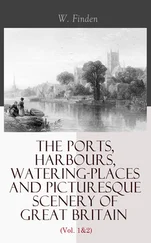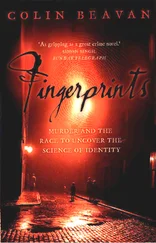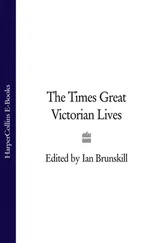Pox: Genius, Madness and the Mysteries of Syphilis
(2004) by Deborah Hayden, and from Alastair Barkley, a consultant dermatologist in London.
298
the book by John Rhode. The Case of Constance Kent
(1928).
299
The person best placed to solve a crime . . . its perpetrator.
In Sophocles'
Oedipus the King,
sometimes cited as the original detective story, Oedipus is both the murderer and the detective; he commits and he solves the crimes. 'In any investigation, the real detective is the suspect,' wrote John Burnside in
The Dumb House
(1997). 'He is the one who provides the clues, he is the one who gives himself away.'
299
The holes in her story left the way open . . . the main players in the case had died.
In
Murder and its Motives
(1924) Fryniwyd Tennyson Jesse accepted Constance's guilt but lamented that the girl was born into an age unable to understand and accommodate her complex psychology. In
The Rebel Earl and Other Studies (1926)
William Roughead regretted that the alienists had not recognised that Constance had 'a mind diseased'. In
Saint - with Red Hands?
(1954) Yseult Bridges argued that the true killers were Samuel Kent and Elizabeth Gough, and that Constance confessed in order to protect them. In
Victorian Murderesses
(1977) Mary S. Hartman agreed that Constance probably made a false confession to conceal her father's guilt. In
Cruelly Murdered (1979)
Bernard Taylor proposed that Constance killed Saville, but that Samuel, who was having an affair with Gough, mutilated the body to conceal his daughter's crime and his own misdemeanour.
Among the fictional versions of the story is a scene in the British horror film
Dead of Night
(1945), in which a girl encounters the ghost of Saville Kent in a remote corner of a country house - he speaks of Constance's unkindness to him. Two years later Mary Hayley Bell's play
Angel,
directed for the London stage by her husband, Sir John Mills, so confused audiences with its sympathy for Constance that it closed within weeks and almost ended Bell's career as a playwright. Eleanor Hibbert, who as Jean Plaidy produced historical novels, fictionalised the case in
Such Bitter Business
(1953), under the pseudonym Elbur Ford. Two characters in William Trevor's
Other People's Worlds
(1980) become obsessed by the Road Hill murder, with horrible results. Francis King's
Act of Darkness
(1983) set the story in colonial 1930s India, and had the boy accidentally killed by his sister and his nursemaid when he surprises them in a lesbian embrace. James Friel's
Taking the Veil
(1989) placed the case in 1930s Manchester, and had the boy killed by his father and his aunt-cum-nursemaid after he witnesses them having sex; his teenage half-sister mutilates the body and makes a false confession of murder to protect the father, who has sexually violated her. In 2003 Wendy Walker compressed the story into a book-length poem,
Blue Fire
(as yet unpublished), which used one word from each line of Stapleton's
The Great Crime of 1860.
299
his confidential reports to Sir Richard Mayne. In MEPO 3/61.
AFTERWORD
303
Stapleton's explanation . . . cut into his neck.
Joshua Parsons, who was in charge of the post-mortem, disagreed with this interpretation of the cuts to Saville's finger. The incisions had not bled, he told the magistrates' court on 4 October 1860, which meant that they must have been made after death, probably by accident. In any case, he said, he thought the cuts were on the right hand, not the left. His reading of the body supported the theory that the child was suffocated, a finding that Stapleton was determined to disprove. The doctors' dispute returns Saville to the realm of riddle and debate. The image of the live child dims.
303
'The detective story . . . a happy ending.'
In a letter of 2 June 1949 to James Sandoe. From
The Raymond Chandler Papers: Selected Letters and Non-Fiction, 1909-1959
(2000), edited by Tom Hiney and Frank MacShane. Chandler argued in the same letter that a detective story and a love story could never be combined, because the detective story was 'incapable of love'.
LIST OF ILLUSTRATIONS
Page 42: Metropolitan Police officers discover a body under the kitchen floor of Frederick and Maria Manning in Bermondsey, south London, 1844 (from Mysteries of Police and Crime by Arthur Griffiths)
Page 58: Floorplan of Road Hill House
Page 76: Map of the village of Road
Page 90: Map of area surrounding Road
Page 98: Inaccurate floor plan of Road Hill House, published in the Bath Chronicle, 12 July 1860 (courtesy Daniel Brown/ Bath in Time/ Bath Central Library)
Page 160: Map of central London
Page 206: Lady Audley and an alienist, from a serialisation of Mary Elizabeth Braddon's Lady Audley's Secret in the London Journal, 1863
Page 226: Constance Kent's confession, April 1865
Page 246: A postcard of Constance Kent, printed in 1865
Page 260: Female inmates of Millbank prison in the 1860s (from Memorials of Millbank by Arthur Griffiths)
Page 282: Map of Australia
SELECT BIBLIOGRAPHY
Further sources are detailed in the Notes
PRIMARY SOURCES
Metropolitan Police, Home Office and court files
ASSI 25/46/8
HO 45/6970
HO 144/20/49113
MEPO 2/23
MEPO 3/61
MEPO 3/53
MEPO 3/54
MEPO 4/2
MEPO 4/333
MEPO 7/7
MEPO 21/7
Newspapers
The Bath Chronicle
The Bristol Daily Post
The Daily Telegraph
The Frome Times
The Morning Post
The News of the World
The Observer
The Penny Illustrated Paper
The Somerset and Wilts Journal
The Times
The Trowbridge & North Wilts Advertiser
The Western Daily Press
Journals
All the Year Round
The Annual Register
Chambers's Edinburgh Journal
House-hold Words
The Law Times
Once a Week
Books and pamphlets
A Barrister-at-Law,
The Road Murder: Being a Complete Report and Analysis of the Various Examinations and Opinions of the Press on this Mysterious Tragedy,
London, 1860
'Anonyma' (W. Stephens Hayward),
Revelations of a Lady Detective,
London, 1864
Braddon, Mary Elizabeth,
Lady Audley's Secret,
London, 1862
Cavanagh, Timothy,
Scotland Yard Past and Present: Experiences of Thirty-Seven Years,
London, 1893
Coleridge, Ernest Hartley,
Life and Correspondence of John Duke, Lord Coleridge,
London, 1904
Collins, Wilkie,
The Woman in White,
London, 1860
Collins, Wilkie,
The Moonstone,
London, 1868
Davies, James,
The Case of Constance Kent, viewed in the Light of the Holy Catholic Church,
London, 1865
Dickens, Charles,
Bleak House,
London, 1853
Dickens, Charles,
The Mystery of Edwin Drood,
London, 1870
House, Madeline and Storey, Graham,
The Letters of Charles Dickens
1859-61, London, 1997
Hood, Edwin Paxton,
Читать дальше












